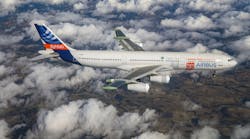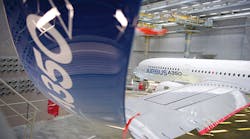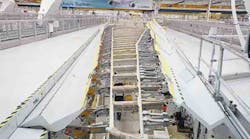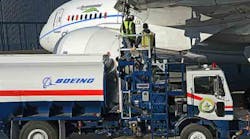Airbus SAS completed the first test flight for its A340 laminar-flow “BLADE” test demonstrator aircraft, a successful three-hour, 38-minute circuit from the Tarbes aerodrome in southern France to Airbus’ facilities in Toulouse Blagnac. The Blade project seeks to
“Blade” is an acronym for “Breakthrough Laminar Aircraft Demonstrator in Europe”, and the project’s goal is to reduce jets’ wing friction by 50%, which would improve the aircraft’s ecological footprint and reduce CO2 emissions by 5%.
“Laminar flow” is a term in fluid dynamics characterizes a flow featuring high momentum diffusion and low momentum convection, in contrast to “turbulent flow.”
A primary goal of the Blade project is to be able to measure the tolerances and imperfections that can be present and still sustain laminarity. Airbus will simulate every type of imperfection in a controlled manner, so that at the end of the campaign the tolerances for building a laminar wing will be fully known.
The first flight marks the start of the Blade flight-test campaign to explore the wing’s characteristics in flight. The Airbus A340 Flight Lab is said to be the world’s first test aircraft to combine a transonic laminar wing profile with “a true internal primary structure.”
The jet is fitted with two transonic laminar outer-wings, while the cabin has a specialized flight-test-instrumentation (FTI) station.
The wings have hundreds of test points for measuring the waviness of the surface, to help engineers ascertain its influence on the laminarity (reportedly the first time Airbus has used this a testing method on an aircraft.
They also are using infrared cameras inside the pod to measure wing temperature and the acoustic generator that measures the influence of acoustics on laminarity. There also is an innovative reflectometry system, which measures overall deformation in real-time during flight.
The flight lab will perform around 150 flight hours in the coming months, according to Airbus.
The modifications to the A340-300 test-bed aircraft took place in Tarbes over 16 months, with contributions from multiple European industrial partners.










